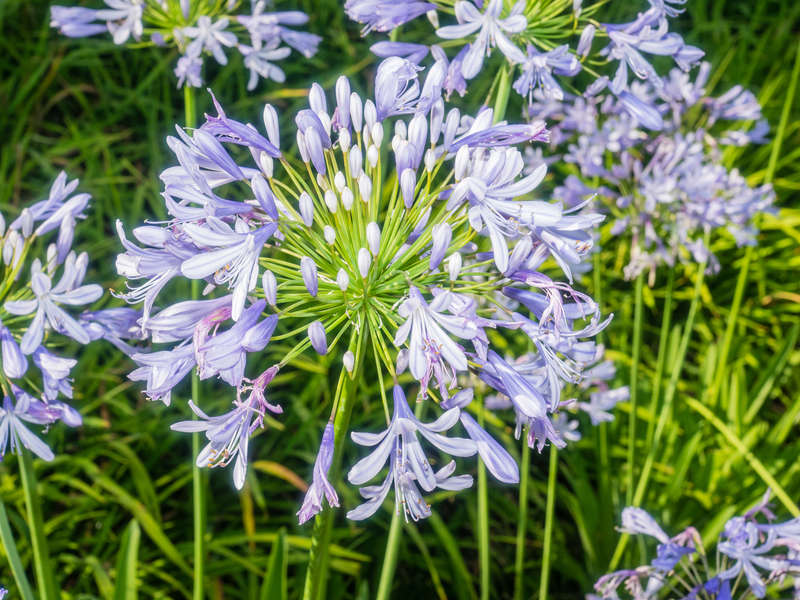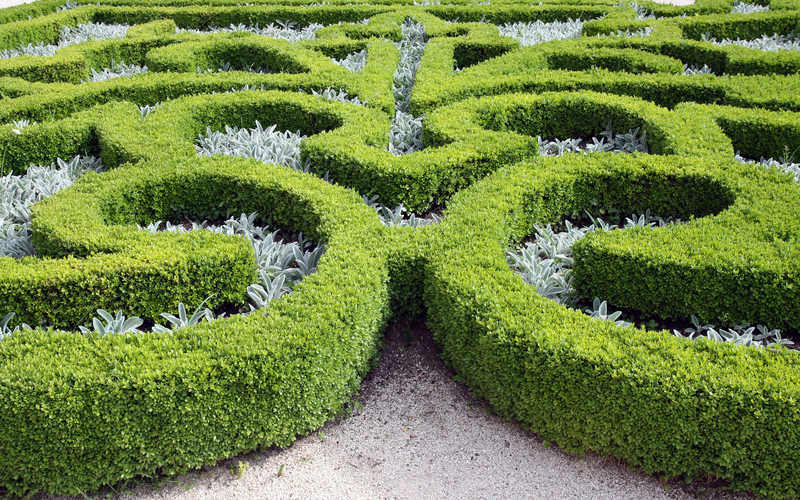How to Design a Moveable Garden: Three Dynamic Tips for All Spaces
Looking to add lush greenery to your living space but don't want the hassle or permanence of a traditional garden? Moveable gardens are transforming the way we interact with plants. Whether you're a renter, city dweller, or simply crave flexibility, a moveable garden design offers unparalleled versatility, creativity, and joy. In this comprehensive guide, you'll discover how to design a moveable garden--complete with three expert tips applicable to any space, from sprawling patios to tiny balconies.
What Exactly Is a Moveable Garden?
Moveable gardens--sometimes called portable gardens or mobile container gardens--consist of plants grown in containers, planters, and specialized structures designed for *easy rearrangement or relocation*. These adaptable gardens are perfect for maximizing limited space, protecting sensitive plants from harsh weather, and infusing any area with vibrant life--all without committing to permanent landscaping.
- Ideal for renters: Garden without altering property
- Adaptable to any space: Balconies, patios, rooftops, or indoors
- Flexible design: Rearrange plants as seasons and needs change
Understanding how to design a dynamic, moveable garden lets you transform any space into a verdant oasis--ready to roll wherever life takes you.

Why Choose a Moveable Garden? Top Advantages
Before exploring design strategies in detail, let's review the main reasons to choose a moveable garden. Embrace the freedom and functionality these gardens provide:
- Flexibility: Move plants to chase the sunlight or protect them from wind, rain, and frost.
- Mobility: Rearranging your garden is easy--no tools, no digging, and no mess.
- Versatility: Ideal for spaces of every size and easily scaled up or down to fit your needs.
- Enhanced creativity: Experiment with design layouts, plant pairings, and color schemes--then change your mind as often as you like!
- Protection: Sensitive or expensive plants can be sheltered indoors during bad weather.
- Easy maintenance: Move plants to easier access areas for pruning, watering, and harvesting.
Now, let's dive into our expert-approved three dynamic tips for creating a stunning, functional, and truly moveable garden--regardless of your living situation.
Tip 1: Choose the Right Containers for Flexibility & Style
The foundation of any moveable garden is its containers. Selecting the right planters can mean the difference between an awkward, clunky collection and a harmonious, easy-to-move arrangement. Here's how to pick the best containers for your moveable garden design:
Consider Size, Weight, and Material
- Weight: Opt for lightweight materials like resin, fiberglass, plastic, or lightweight cedar--these are easier to lift, slide, or roll. Avoid heavy stone or thick ceramic unless using casters.
- Drainage: Ensure every container has proper drainage holes--waterlogged roots will sabotage your efforts!
- Mobility aids: Attach wheels or place containers on rolling plant stands for the *ultimate convenience*. Look for locking casters for added stability.
- Handles: Some containers include built-in handles, making moving a breeze. DIY options include sturdy rope, old belts, or repurposed handles attached with brackets.
Style Your Moveable Garden
Your planters and containers should reflect your unique aesthetic. Want a modern look? Try sleek geometric shapes and neutral hues. Prefer boho-chic? Mix colorful pots with woven baskets and reclaimed crates. *Don't be afraid to mix textures and materials!* Remember: unity in diversity creates the most inviting and eye-catching arrangements.
Tip 2: Optimize Plant Selection for Portability & Impact
Designing a moveable container garden is about more than just portability--it's also about selecting plants that thrive together and look great, no matter where you place them. Here's how to choose winning plant combinations:
Match Plant Needs
- Sunlight: Group sun-lovers and shade-dwellers in separate containers so you can move them as light conditions change during the day or across seasons.
- Watering: Avoid pairing drought-tolerant plants with thirsty varieties in the same pot--each container should have plants with similar needs for simplest care.
- Growth habits: Mix upright, vining, trailing, and compact varieties for beautiful, layered displays that feel lush, yet manageable.
Go for Maximum Visual Impact
The classic container-planting formula is: "Thriller, Filler, Spiller"--
- Thriller: A taller or unique focal plant for drama
- Filler: Lower, bushier plants to add fullness
- Spiller: Trailing plants to blend edges and add flow
For example, a tall grass (thriller), surrounded by vibrant petunias (fillers), and cascading ivy (spiller) creates a visually stunning, balanced pot.
Add Edible Plants and Herbs
Why not blend beauty with utility? Many popular moveable garden designs integrate herbs--such as basil, thyme, parsley, and mint--alongside ornamental plants. Cherry tomatoes, strawberries, and peppers all make excellent container crops. Enjoy snipping fresh flavors while admiring your handiwork!
Tip 3: Plan for Easy Mobility & Year-Round Use
A truly dynamic mobile garden adapts gracefully as seasons and circumstances evolve. Design your setup for effortless movement and maximum longevity by considering these strategies:
Maximize Mobility
- Use tiered stands or shelves: Vertical elements not only boost your growing space, but also make moving collections more manageable--just move the rack or stand.
- Group by weight/size: Heavier or bulkier containers should go on lower tiers or separate wheeled platforms; lighter pots can be stacked or nested.
- Plan access routes: Anticipate how you'll move containers through tight doorways or along balconies. Select pathways free from obstacles and design your layout with mobility in mind.
- Seasonal rotation: Keep easy-to-move, seasonal plants (like spring bulbs or summer annuals) in smaller or lighter pots so you can swap them on a whim.
Adapt for All Seasons
Climate can make or break your moveable garden--unless you're prepared! Here's how to keep your garden thriving:
- Cold protection: Use frost cloths, move pots indoors, or huddle containers together for warmth in winter.
- Sun/heat shelter: Roll containers into the shade or cover with umbrellas during the hottest months.
- Rain management: Have a sheltered spot for rain-sensitive plants, or cover containers with transparent tarps during storms.
- Year-round greenery: Incorporate evergreens, succulents, or hardy perennials so your garden always has life--whatever the season!
Practical Ideas for Moveable Gardens in Any Space
Still not sure how to start your portable garden? Here are inspirational ideas for every type of living area:
- Balconies: Use railing planters, vertical wall pockets, and narrow troughs to make the most of limited floorspace.
- Patios/Terraces: Combine large rolling troughs and movable garden beds; add plant caddies or trolleys for big pots.
- Small Yards: Design zones with clusters of pots, raised beds on wheels, or movable trellises for climbing plants.
- Indoor Spaces: Use drip trays under pots and rolling stands; focus on air-purifying, shade-tolerant houseplants.
- Community Gardens: Design portable raised beds or buckets that can be moved for events or seasonal swaps.
Remember--moveable garden design is about creativity and convenience. There are no rules except those you create to suit your lifestyle!
Common Mistakes to Avoid with Moveable Gardens
Even the best-laid moveable garden plans can hit snags. Dodge these pitfalls for a garden that's a breeze to maintain:
- Overfilled containers: Cramming too many plants in one pot stunts growth and complicates watering.
- Poor drainage: Soggy roots = unhappy plants; always check for and maintain clear drainage.
- Neglecting mobility aids: Heavy, unwieldy pots without rollers can turn gardening into a chore.
- Ignoring climate changes: Be proactive about temperature swings so your mobile garden withstands any weather.
Maintenance and Upkeep: Keeping Your Moveable Garden Thriving
One of the biggest perks of a moveable garden is simpler maintenance. To enjoy healthy, beautiful plants year-round:
- Check soil moisture often: Containers dry faster than ground beds--especially in sunny spots.
- Refresh soil annually: Old potting mix compacts and loses nutrients. Top up with fresh soil or compost every season.
- Fertilize regularly: Frequent watering leaches nutrients, so feed plants according to their individual needs.
- Prune and deadhead: Keep display tidy and prolong blooming by removing spent flowers/leaves.
- Watch for pests: Containers are easier to inspect--stay vigilant against insects and diseases.
Moveable Garden Inspiration: Creative Design Examples
Let your imagination run wild with these creative, real-world examples:
- Kitchen Garden Cart: Build a rolling cart with tiers for herbs and veggies. Simply wheel it from kitchen to patio as needed.
- Stacked Planter Tower: Stack lightweight pots on a central pole--each can be removed, rearranged or replaced for endless design variations.
- Upcycled Wheelbarrow Garden: Turn a salvaged wheelbarrow into a unique, mobile flower bed--perfect for showcasing changing seasonal blooms.
- Shoe Organizer Herb Wall: Hang a canvas shoe organizer on a railing or wall for instant, moveable herb-access.

Frequently Asked Questions About Moveable Gardens
1. What plants work best in moveable gardens?
Choose compact, adaptable varieties such as herbs, salad greens, compact tomatoes, peppers, dwarf shrubs, succulents, and annual flowers.
2. How do I prevent containers from tipping over?
Use wide-based pots, avoid top-heavy combinations, and group containers for stability. On windy balconies, add rocks or sand to base planters for extra weight.
3. Are moveable gardens eco-friendly?
Absolutely. Reuse old containers, choose organic soils, and focus on water-wise plant selections to minimize environmental impact.
4. How often should I move my plants?
There's no set rule! Move them seasonally, to adapt to sun patterns, or simply when you want to refresh the look of your space.
Conclusion: Your Moveable Garden Awaits
Designing a moveable garden unlocks a world of green possibilities for every home--no matter the size or permanence. By choosing the right containers, selecting adaptable plants, and optimizing for year-round mobility, you'll cultivate beauty, function, and flexibility in any space.
The future of urban and small-space gardening is portable, dynamic, and endlessly customizable. Try these tips, experiment with your own unique combinations, and watch your moveable garden thrive--season after season.
Ready to roll out your green dreams? Start designing your moveable garden today!